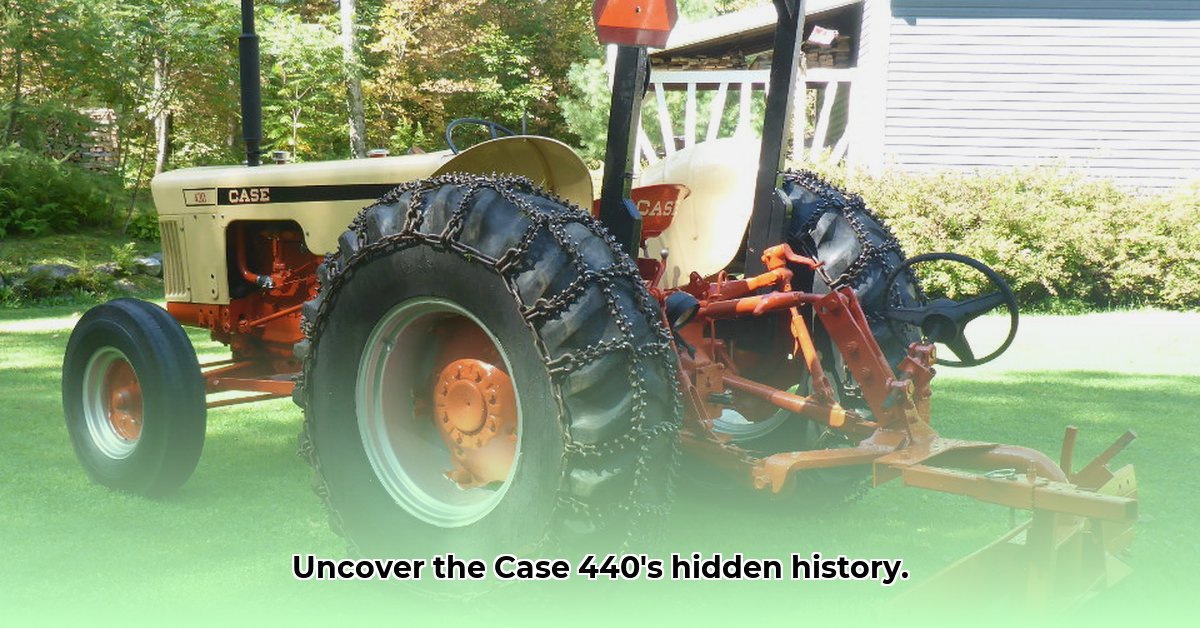
A Sixties Farm Legend: The J.I. Case 440
The J.I. Case 440, produced between 1960 and 1969, wasn't just another tractor; it was a symbol of the mechanization of American agriculture. Its robust design and dependable performance cemented its place in farming history. But what exactly made this machine so special, and what is its legacy today? Let's delve into the specifics. For more Case 4WD tractor information, see this site.
The Heart of the Matter: The Case 440 Engine
Powering the Case 440 was a 2.4-liter, four-cylinder gasoline engine, delivering approximately 33 horsepower (some sources cite 33.5 hp, likely due to variations in testing methodologies). While modest by today's standards, this engine provided reliable power for the farm tasks of its era. Its simplicity, compared to later, more complex fuel injection designs, contributed to its rugged dependability. Think of it as a sturdy workhorse—perhaps not flashy but undeniably capable. Isn't it fascinating how technology has advanced?
Did you know that the simplicity of the Case 440's engine design was a key factor in its popularity amongst farmers? It was easy to maintain and repair, a crucial advantage in a time when specialized mechanics weren't readily available.
Shifting Gears: Transmission Options
The Case 440 offered farmers a choice of transmissions to match their needs and preferences. Options included a straightforward four-speed gearbox, a twelve-speed (unsynchronized, requiring careful engine speed matching during shifts), and an eight-speed model featuring a convenient shuttle shift. That shuttle shift allowed for rapid direction changes without using the clutch—a significant advantage for tasks requiring frequent back-and-forth maneuvering. This flexibility highlighted the tractor's adaptability to various farming operations. How did this range of options impact the Case 440's overall appeal? This versatility appealed to a wide range of farmers.
Beyond the Basics: Features and Upgrades
The Case 440 incorporated several features that were becoming increasingly common in farm machinery during the 1960s. Standard equipment included the Case Eagle Hitch and Draft-o-Matic draft control, enhancing ease and precision of operation. From 1966 onward, an independent power takeoff (PTO) shaft further expanded the tractor's versatility. Combine these with the optional front-end loader, and the Case 440 transformed from a simple plowing machine into a truly multi-purpose farm implement. However, power steering wasn't initially standard; the exact year of introduction remains uncertain according to historical records. What are some of the other upgrades or improvements that farmers found useful? The ability to add implements like a front-end loader dramatically increased efficiency.
From Heartland Factories: Production and Popularity
Case 440 tractors were manufactured in Rock Island, Illinois, and Racine, Wisconsin. Serial numbers, ranging from 6144001 in 1960 to 8356251 by 1969, offer a glimpse into the meticulous production records of J.I. Case. While precise production figures are elusive, the sheer number of units suggests considerable popularity among farmers. Its robust design and reliable performance were key drivers of its widespread adoption.
Legacy of a Workhorse: The Case 440 Today
Today, the Case 440 holds a special place among collectors and restoration enthusiasts. Its relatively simple mechanics make restoration a rewarding project, while its historical significance ensures its continued appreciation as a piece of agricultural heritage. Sourcing original parts can be challenging, adding to the satisfaction of a successful restoration. But for those passionate about preserving farming history, the Case 440 represents a tangible link to the past; a captivating journey of rediscovery with every restored component.
Key Specifications: A Quick Reference
| Feature | Specifications | Notes |
|---|---|---|
| Engine | 2.4L 4-cylinder Gasoline | Power output varied slightly, with reports around 33-33.5 hp depending on model year. |
| Power Output | Approximately 33 hp | Considerably affected by gear selection and operating conditions. |
| Transmission Options | 4-speed, 12-speed (unsynchronized), 8-speed (mechanical shuttle) | Each option offered unique advantages and disadvantages. |
| Hitch | Case Eagle Hitch | Standard feature |
| Draft Control | Draft-o-Matic | Standard feature |
| Independent PTO | Available from 1966 | A significant upgrade enhancing versatility. |
| Power Steering | Optional (Exact year of introduction uncertain) | A feature gradually added. |
The J.I. Case 440 wasn’t revolutionary, but its reliability and efficiency made it invaluable. It stands as a symbol of a pivotal era in agricultural advancement, a testament to the innovation and hard work of farmers and the engineers who created the machines that powered their efforts. Its legacy continues, not just in the fields, but also in the workshops of dedicated enthusiasts who keep this piece of history alive.